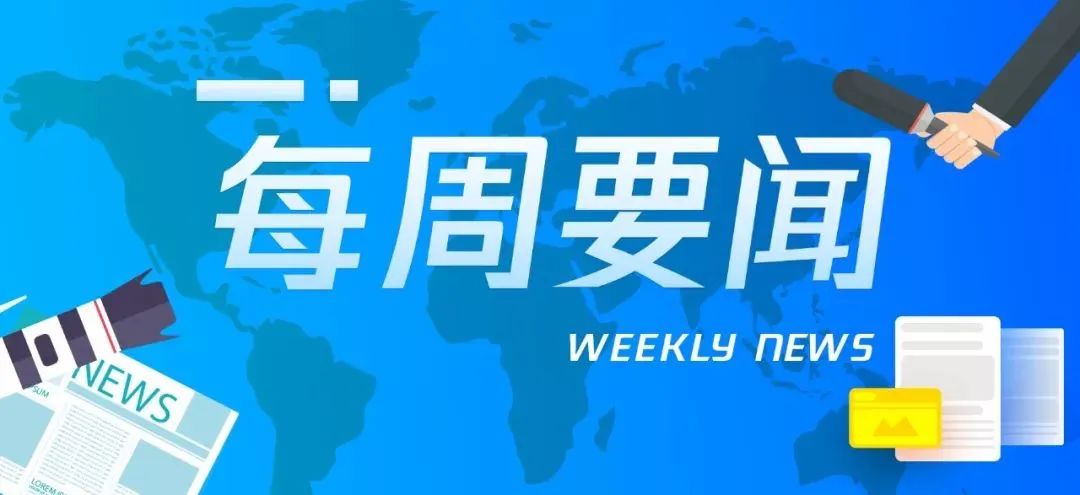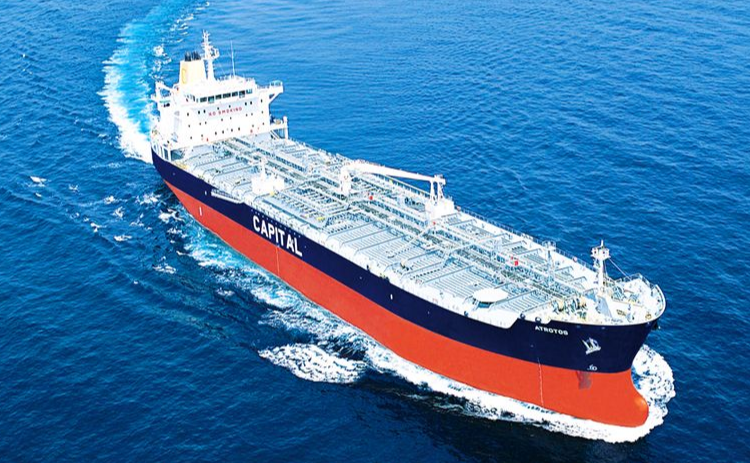
全球化工市场要情暨
化销国贸高质量发展
系列报道
Global Chemical Market Highlights & SCCI High Quality Development Series Report
2024年第4期(总197期)
Issue #4, 2024 (Total 197)
中文版

化销国贸声音
一个组织的愿景,对一个组织的永续发展非常重要。我们公司的愿景是我们公司高质量发展的不竭动力。我们公司的愿景要与集团公司及化销公司的大愿景一脉相承,紧密衔接。我们公司的愿景是什么呢?集团公司赵东总经理于2023年11月6日在公司开业典礼致辞中要求我们,奋力打造世界领先化工产品国际贸易综合服务商。这就是我们公司的愿景。我们化销国贸人要以拼搏为舟、奋斗作桨,为了这个愿景永续奋斗,久久为功。
全球化工市场要情

(一)化工市场要闻
1.运费飙升拖累亚欧石化品贸易。由于胡赛武装袭击持续,约62%航运船队从苏伊士运河改道,船只的燃油费、保险费也因而增加。据船舶经纪公司称,1000吨货物的亚欧运费已从之前的160美元/吨左右飙升至200美元/吨以上,一个四十英尺标准集装箱的运输成本从1500美元飙升至4000美元。受运费影响,目前中国和欧洲之间醋酸、PTA等化工品的现货贸易量已经枯竭。
简评:红海冲突致使亚欧航线运行时间增加,集装箱周转率降低。考虑到运能不足和可能拥堵的情况,预计1月下旬到2月中旬亚欧航线运费维持高位。
2.ADNOC董事会将低碳项目目标提高到230亿美元。 阿布扎比国家石油公司1月22日表示,其董事会将脱碳和低碳项目的拨款从2030年的150亿美元增加到230亿美元。该公司还计划到2030年将其碳捕集与封存(CCS)产能目标翻一番,达到1,000万吨/年。到2030年将其温室气体强度降低25%,实现接近零的甲烷排放。
简评:国际石化巨头目前主要通过碳封存,碳汇抵消,新能源,生物燃料等形式开展碳减排行动。碳中和脚步的进一步加快,推动化工供给端和消费端的结构转型,可降解、可再生等绿色新材料行业的发展。
3.无人机袭击升级影响俄罗斯燃料出口。1月25日,乌克兰无人机袭击俄罗斯石油公司(Rosneft)在黑海的以出口为导向的图阿普谢炼油厂(Tuapse),导致炼厂起火。该炼厂的炼能约合24万桶/日,目前大火已经扑灭。乌克兰目前以俄罗斯境内的燃料生产和分销网络为袭击目标,旨在破坏俄罗斯从石油出口中为其在乌克兰的战争提供资金的能力,加剧了市场对俄罗斯石油供应的担忧。
简评:俄罗斯从波罗的海及黑海的主要石油码头每天出口约480万桶的原油和成品油。无人机袭击可能导致俄罗斯石脑油供应中断,支撑国际石脑油价格。
(二)重点化工产品商情
1.石脑油:价格:CFR日本石脑油周均价上涨6.8美元至670美元/吨。装置及市场动态:红海航运紧张局势继续加剧大宗商品市场的供应担忧,与此同时,俄罗斯诺瓦泰克公司乌斯季卢加港供应中断增加了2月和3月供应的不确定性。俄罗斯西部的成品油出口码头在遭到袭击后关闭了部分业务,这可能导致俄罗斯石脑油出口量下降。装置方面,泰国石油公司于 1 月 11 日关闭了位于 Sriracha 炼油厂的原油蒸馏装置进行计划外维修。
2.甲醇:价格:CFR中国周均价上涨6美元至291美元/吨。装置及市场动态:本周整体市场稳中有涨。美国市场受寒潮天气影响,部分装置停车或降幅,区域内市场供应紧缩,价格窄幅上涨;中国市场由于港口市场可流通量较少,价格强势上行,CFR中国价格跟随上涨;其他地区市场变动相对有限,窄幅整理为主。
3.乙烯:价格:CFR东北亚周均价上涨26美元至886美元/吨。装置及市场动态:本周亚洲乙烯市场延续涨势。本周期乙烯价格上涨原因有三:一是来美国的货物预计到港 集中在3-4月份左右,故现阶段供应量下滑;二是韩国当地裂解装置集中降负荷,可出售的货物同样有限;三是中东当地因成本增加而导致裂解开工下滑,整体产量下降。供应端持续缩量,来自中国2月的需求表现强劲,业者对后市信心十足。
4.纯苯:价格:FOB韩国周均价上涨23.2美元至959.8美元/吨。装置及市场动态:本周期亚洲苯市场连续五个交易日上涨。有业者表示,美国供应减量为苯上涨提供利好支撑,但是巴拿马运河堵塞限制了亚美套利。从韩国到墨西哥湾沿岸大概要近 2 个月的时间。装置方面,日本 Idemitsu Kosan 在 Chita 的工厂计划 5-6 月停车检修,为期 60 天,涉及纯苯产能 16 万吨/年;位于 Tokuyama 的工厂计划在 9-11 月检修,为期 90 天,涉及纯苯产能 22 万吨/年。欧洲苯市场供应较为紧张,因为之前向美国公开的套利导致了欧洲苯目前的数量短缺,此前因为美国的供应不足迫使消费者寻找其他大陆的材料。美国地区由于运输延误和供应紧张,苯价格继续攀升。
5.PX:价格:CFR中国周均价上涨15.83美元至1034.93美元/吨。装置及市场动态:本周 PX 均价上涨,中东局势不稳定性延续,石脑油供应紧张下价格上涨,成本侧支撑仍存,叠加下游PTA受资金及聚酯节前刚需补货支撑绝对价格走强,周内PX价格上涨。
6.MEG:价格:CFR中国周均价上涨9美元至555美元/吨。装置及市场动态:本周亚洲乙二醇市场延续强势,海外装置负荷降低,运输问题导致近月可售货源减少,卖盘惜售下,推高市场多头情绪。
7.PE:价格:HDPE薄膜料CFR东南亚价格下降9美元至981美元/吨,LDPE薄膜料CFR东南亚价格上涨35美元至1066美元/吨。装置及市场动态:本周中国工厂检修数量增加导致聚乙烯供应紧张,上游的乙烯供应依然紧张,由于供应不足,几乎没有关于确定谈判的报道。销售兴趣依然强劲,多数卖家称2月剩余货物有限。在印度,由于供应短缺和需求强劲,高压薄膜价格在本周上涨至1140美元/吨后保持稳定。亚洲市场在春节假期前需求平淡,一些买家正在等待更多来自中东的货物价格报盘,不过听到的多数价格指标较为坚挺。工厂方面:台湾台塑石化于1月19日至1月31日关闭了HDPE生产线,并计划于1月22日至2月22日关闭其位于麦辽LLDPE进行检修,HDPE产线的产能为32万吨/年,而LLDPE生产线的产能为 26.4 万吨/年。
8.PP:价格:CFR东南亚均聚/注塑料价格维持944美元/吨。装置及市场动态:本周亚洲聚丙烯稳中有涨。东南亚方面,印尼的需求已经放缓,因为参与者上周已经准备了足够的库存,许多人有足够的库存来维持短期供应。三周后将举行总统选举,因此不会提振需求。聚丙烯进口配额定于 3 月份实施,买家正在停止购买。南亚方面,来自中东的报价保持坚挺,因为卖家在其他地区找到了更好的利润,促使他们维持报价。中国方面,国内聚丙烯价格因春节假期前补货而得到支撑。
化销国贸高质量发展
系列报道

合规护航
以案示警提升国际贸易风险管控能力
1月24日,公司邀请集团公司高级专家于玮玮在公司全员范围内进行了国际贸易重大案例风险警示教育培训讲座。本次培训使得全员更好地吸取了以往国际贸易经营风险案例教训,对国际贸易风险有了更全面的认识。公司副总经理、总会计师安东华主持,公司总经理、党委副书记林文选,党委副书记、纪委书记、工会主席崔凌出席,全体员工参加。
于玮玮详细地讲解并剖析了近年来发生的国际贸易案例,传授了国际贸易法律风险及防范专业知识。她从加强员工法制和廉洁教育、业绩发展观、交易对手日常管理等方面给公司提出风险合规体系建设启示和建议等。
林文选对公司风险防控工作提出要求:要深刻意识到公司当前面临严峻复杂的国际局势和经营形势,风险防范和监督任重道远;要正确虚心地认识合规管理的要求和意义,有目的有步骤地去构建风险合规管理体系;要建立风险防控体系,业务、财务、物流、执行、法律为第一道防线,风险防控为第二道防线,纪检监督为第三道防线;要加强对国际法律法规和国际贸易专业知识的学习,以专业的精神来对待业务。(赫海华)

化销国贸纯苯长约签约量逆势喜迎增长
近期,化销国贸纯苯团队充分发挥深耕资源渠道优势,多措并举,在下游加工毛利不足、纯苯内外盘价格倒挂的不利局面下,成功签订长约20余万吨,为化销国贸纯苯经营奠定坚实基础。
2024年,纯苯下游的苯乙烯、己内酰胺、己二酸等需求量巨大,但纯苯的新增产能不足,全球纯苯供应缺口进一步加大。但国内纯苯下游因加工毛利不足,加上去年内外盘价格倒挂现象严重,进口买家报价偏低,今年整体进口长约商谈进展缓慢。面对困难和挑战,化销国贸纯苯团队充分发挥渠道优势,一方面在化销本部统筹下,与各区域分公司通力合作,大力拓展系统内进口长约,加强国外资源的获取;另一方面持续开发系统外转口业务,深度参与国际贸易;同时,在东南亚与传统合作的上游工厂签订年度采购长约,多措并举,团队成功签订长约20余万吨,为2024年的纯苯经营打好基础。
纯苯是中石化的优势产品,在内贸市场中具有市场引领作用,化销国贸成立后,在化工销售的指导下,通过与区域公司内外配合,将纯苯的内贸优势与外贸业务相结合,进一步拓展纯苯的国际化业务,做大做强国际贸易!(邹志强 陈捷宇 郭莉薇)

化销国贸“期现结合”服务生产企业走深走实
化销国贸PX团队继2023年打通新加坡SGX平台PXN衍生品套期保值流程之后,2024年1月份再接再厉,利用境外金融衍生品工具,帮助生产企业完成了套期保值操作,持续践行“服务企业转型”的初心使命。
2024年伊始,PX市场价格有所反弹,而石脑油受烯烃拖累,价格偏弱,PX-石脑油空间拉大。近期海南炼化PX生产负荷提升,2条线同时生产,亟需利用套期保值工具保护生产利润。结合2023年套期保值的成功经验,PX团队积极发挥贴近国际市场的优势,自2023年下半年起,保持每日向海南炼化、镇海炼化、上海石化等生产企业更新PXN的市场价格变动,帮助生产企业了解市场信息,拉近生产企业与市场的距离,服务生产企业。海南炼化结合自身实际需求,通过化销华南委托化销国贸进行2024年的PXN套期保值。PX团队在2023年的成功经验上继续完善操作方案,抓住PXN扩大的机会,帮助生产企业进行锁定,达成了企业的预期目标。(麦志良 白云峰)

化销国贸开辟类油化工品“物流+”出口业务新赛道
近日,随着多个品种的类油化工品合计约1万多吨出口订单相继成交,标志着化销国贸在华南、华东地区之外,又成功开辟了类油化工品“物流+”业务在华北区域新的赛道,实现“多点开花”,并取得新突破。
化销国贸一直坚持“以客户为中心”的理念,不断优化创新,服务客户增值,为企业破解难题。类油化工品自出口以来,在销售端,不断探索客户需求,一方面挖掘同一产品的不同客户需求,另一方面开发同一客户的不同产品需求,为不同客户量身定制产品供应方案。在资源端深入分析国内主流工厂产品特点、仓储条件以及不同港口的区域优势。在物流运输端,仔细研究南北航线不同船东的船队规模和船型大小,采取包船的方式,以物流反向促进业务开发。通过产品整合和物流优化,既为客户提供多产品组合定制化服务,增强了客户粘性;又为企业降低物流成本,提高了落袋价格,还为化销国贸提高采销两地市场占有率和影响力,最终实现多方共赢。(李文雪 王力 袁晓晶 罗雅逸 王安勤 )
English Version

VOICE OF SCCI
The vision of an organization is crucial for its sustainable development. The vision of our company serves as the inexhaustible impetus behind the high-quality growth. Aligned closely with the overarching vision of Sinopec Group and Sinopec Chemical Commercial Holding Company Limited, our company’s vision is a continuous extension. What should be the vision of our company?
As articulated by General Manager Zhao Dong during the inauguration ceremony on November 6, he urged us to strive to build the company into a world-leading comprehensive service provider in the international trade of petrochemical products. This is the vision of our company.
As members of the international trade team, we are urged to paddle with determination and strive with unwavering effort to achieve and sustain this vision, recognizing that success comes through persistent dedication.
GLOBAL CHEMICAL MARKET BRIEF
(I) Highlights of chemical market
1. The soaring freight rate has dragged down the Asia-Europe petrochemical trade. As the Houthi movement's attack continued, about 62% of the shipping fleet was diverted from the Suez Canal, and the fuel and insurance costs of the ships also increased. According to the shipping agency, the Asia-Europe freight for 1,000 tons of goods has soared from about $160/ton to more than $200/ton, and the transportation cost of a 40-foot standard container has soared from $1,500 to $4,000. Affected by freight, the spot trade volume of chemicals such as acetic acid and PTA between China and Europe has dried up.
Comment: The conflict in the Red Sea has increased the running time of Asia-Europe routes and decreased the container turnover rate. Considering the shortage of transportation capacity and possible congestion, it is expected that the freight rate of Asia-Europe routes will remain high from late January to mid-February.
2. ADNOC board boosts low-carbon project target to $23 bil. Abu Dhabi National Oil Co. said Jan. 22 that its board increased the allocation for decarbonization and lower-carbon projects to $23 billion by 2030 from $15 billion while affirming its growth plans in crude oil and natural gas. The company also aims to double its carbon capture and storage (CCS) capacity target to 10 million mt/year by 2030. reduce its greenhouse gas intensity by 25% and achieve near-zero methane emissions by 2030.
Comment:Currently, international petrochemical giants mainly carry out carbon emission reduction actions through carbon sequestration, carbon sink offset, new energy and biofuels. The further acceleration of the pace of carbon neutrality promotes the structural transformation of the chemical supply side and the consumption side, and the development of green new materials industries such as degradable and renewable materials.
3. Russian fuels exports under fire as drone attacks escalate. Rosneft's export-oriented Tuapse refinery on the Black Sea was damaged by a major fire early Jan. 25, marking the latest in a spate of suspected drone attacks by Ukraine designed to damage Russia's ability to fund its war in Ukraine from oil exports. The fire at the refinery, which has a capacity of about 240,000 barrels per day, Although Ukraine has targeted Russia's fuel production and distribution networks previously, the scale and distance of the attacks inside Russian territory have raised the risk profile for Moscow's key crude and product exports flows.
Comment: Russia exports about 4.8 million b/d of crude and products from its main Western oil terminals of Primorsk and Ust-Luga on the Baltic Sea and from Novorossiisk and Tuapse on the Black Sea. Asian naphtha cracks have remained firm this week supported by fears of potential Russian naphtha supply disruptions from drone attacks.
(II) Business information of key chemical products
Naphtha: Price: CFR Japan naphtha weekly average price rose by $6.8 to $670/ton. Unit and market dynamics: The tight shipping situation in the Red Sea continued to aggravate the supply concerns in the commodity market. At the same time, the supply interruption in Port of Ust Luga of Novatec Company of Russia increased the supply uncertainty in February and March. The product oil export terminal in western Russia closed part of its business after being attacked, which might lead to a decline in Russian naphtha exports. On the unit side, Petroleum Authority of Thailand shut down the crude oil distillation unit in Sriracha Refinery on January 11 for unplanned maintenance.
Methanol: Price: CFR China weekly average price rose by $6 to $291/ton. Unit and market dynamics: The overall market was steady and up this week. The American market was affected by the cold wave weather, some units shut down or reduced rate, the market supply in the region was tight, and the price rose within a narrow range; Due to the small amount of liquidity available in the port market in China, the price has risen strongly, and the CFR China price has followed suit. The market changes in other regions were relatively limited, with narrow consolidation as the mainstay.
Ethylene: Price: CFR Northeast Asia average weekly price rose by $26 to $886/ton. Unit and market dynamics: Asian ethylene market continued its upward trend this week. There were three reasons for the increase of ethylene price in this cycle: first, the goods coming to the United States were expected to arrive at port at the same time in March-April, so the supply was declining at this stage; Second, the cracking units in South Korea reduced the load at the same time, and the goods available for sale were also limited; Third, the increase in local costs in the Middle East led to a decline in cracking operating rate and a decline in overall output. The supply side continued to shrink, and the demand from China for February was strong, and the dealers were full of confidence in the market outlook.
Pure benzene: Price: FOB Korea weekly average price rose by $23.2 to $959.8/ton. Unit and market dynamics: The Asian benzene market rose for five consecutive trading days in this cycle. Some dealers said that the reduction of supply in the United States provided favorable support for the rise of benzene, but the blockage of the Panama Canal limited the Asian-American arbitrage. It took about two months from Korea to the Gulf Coast. On the unit side, the plant of Idemitsu Kosan in Chita, Japan, planned to shut down for maintenance in May and June for 60 days, involving a pure benzene production capacity of 160KTA; The plant in Tokuyama planned to have turnaround from September to November for 90 days, involving a pure benzene production capacity of 220KTA. The supply of benzene in Europe was relatively tight, because the arbitrage previously opened to the United States has led to the current shortage of benzene in Europe. Previously, the lack of supply in the United States forced consumers to look for materials from other continents. Due to transportation delays and tight supply in the United States, the price of benzene continued to climb.
PX: Price: CFR China weekly average price rose by $15.83 to $1034.93/ton. Unit and market dynamics: the average price of PX rose this week, the instability in the Middle East continued, the naphtha price rose under the tight supply, and the cost side support still existed. Coupled with downstream PTA supported by capital and replenishment by polyester before festival, the absolute price was strong, and the price of PX rose during the week.
MEG: Price: CFR China weekly average price rose by $9 to $555/ton. Unit and market dynamics: This week, the Asian ethylene glycol market continued to be strong, the overseas units reduced the load, and the transportation problems led to the decrease of the available supply in recent months, which pushed up the bullish sentiment in the market under the circumstance of reluctance to sell.
PE: Price: The CFR Southeast Asia price of HDPE film drop by $9 to $981/ton, and the CFR Southeast Asia price of LDPE film rose by $35 to $1,066/ton. Unit and market dynamics: This week, the increase in the number of turnaround of plants in China led to the shortage of polyethylene supply, and the upstream ethylene supply was still tight. Due to the shortage of supply, there were almost no reports on the confirmed negotiations. Sales interest was still strong, and most sellers said that the surplus goods in February would be limited. In India, due to the shortage of supply and strong demand, the price of high-pressure film remained stable after rising to $1,140/ton this week. Demand in the Asian market was flat before the Spring Festival holiday, and some buyers were waiting for more price offers from the Middle East, though most price indicators heard were firm. On the plant side: Taiwan Formosa Plastics Petrochemical Company closed its HDPE production line from January 19 to January 31, and planned to close its LLDPE in Mailiao for maintenance from January 22 to February 22. The production capacity of HDPE line is 320KTA, while that of LLDPE line is 264KTA.
PP: Price: CFR Southeast Asia homopolymer/injection molding product price maintained at $944/ton. Unit and market dynamics: this week, the polypropylene in Asia was steady and up this week. In Southeast Asia, Indonesia's demand has slowed down, because participants have prepared enough stocks last week, and many people have enough stocks to maintain short-term supply. There will be a presidential election in three weeks, so it will not boost demand. The import quota of polypropylene was scheduled to be implemented in March, and buyers were stopping buying. In South Asia, quotations from the Middle East remained firm, as sellers found better profits in other regions, prompting them to maintain their quotations. In China, domestic polypropylene prices were supported by replenishment before the Spring Festival holiday.
SCCI High Quality Development Series Report

Compliance Escort: Improving the Capability of International Trade Risk Management and Control through Case Warning
On January 24, the company invited Yu Weiwei, Senior Expert of SINOPEC, to conduct a seminar on risk warning education and training of major international trade cases for all the employees. This training session enabled all staff to better absorb lessons from the previous international trade operational risk cases, leading to a more comprehensive understanding of international trade risks. The seminar was chaired by An Donghua, CFO of the company, with the attendance of the General Manager Lin Wenxuan and Deputy General Manager Cui Ling. All employees participated the event.
Yu Weiwei provided a detailed exposition and analysis of recent international trade cases, thoroughly explaining legal risks and preventative expertise in international trade law. She offered insights and recommendations to the company on building a risk and compliance system, covering aspects such as strengthening legal and integrity education for employees, performance development perspectives, and day-to-day management of trading partners.
Lin Wenxuan emphasized the company's risk prevention and control efforts, highlighting the need to deeply recognize the severe and complex international and operational challenges, stressing that the risk prevention and supervision is arduous and has a long way to go; He reiterated the importance of understanding compliance management requirements and significance with humility, urging purposeful and step-by-step construction of a risk compliance management system; Ling called for the establishment of a comprehensive risk prevention and control system, with business, finance, logistics, execution, and legal aspects forming the first line of defense. The second line involves risk prevention and control, and the third line is maintained by disciplinary inspection and supervision. Ling also urged a commitment to continuous learning of international laws, regulations, and trade expertise with a professional mindset in handling business affairs.

The Long-term Contract Volume of Benzene of SCCI Ushered in Growth against the Odds
In a recent development, the Benzene team at Sinopec Chemical Commercial International Co., Ltd. leveraged their deep-rooted resource channels and implemented various measures to successfully secure a long-term contract exceeding 200,000 tons. This achievement comes amidst challenges such as insufficient gross profit in downstream processing and unfavorable price differentials in the benzene market both domestically and internationally, laying a robust foundation for SCCI's benzene operations.
In 2024, the demand for styrene, caprolactam and adipic acid downstream of benzene remains substantial, yet the limited increase in benzene production capacity and a widening global supply gap pose challenges. However, due to insufficient processing gross profit in the downstream of benzene in China, compounded by the significant phenomenon of last year's domestic and foreign market price inversion, import buyers are offering lower prices, resulting in slow progress in negotiation of overall long-term import contracts for this year. Facing these difficulties, the SCCI Pure Benzene team effectively utilized their channel advantages. Collaborating with regional branches and under the overall coordination of Sinopec Chemical Commercial Holding Company Limited, the team expanded long-term import contracts within the system and intensified efforts to acquire foreign resources. Simultaneously, they pursued external re-export business, actively engaging in international trade. The team also secured annual procurement long-term contracts with upstream factories in Southeast Asia. These strategic moves culminated in the successful signing of a long-term contract exceeding 200,000 tons, setting a solid groundwork for SCCI's pure benzene operations in 2024.
Benzene is a key product of Sinopec, holding a leading position in the domestic trade market. Following the establishment, under the guidance of Sinopec Chemical Commercial Holding Company Limited, SCCI collaborates both internally and externally with regional companies. This synergy combines the domestic trade advantages of pure benzene with foreign trade operations, further expanding the international business of pure benzene and strengthening its presence in the global market.

'Futures-Spot Integration' service of SCCI is deepening and solidifying its support for production enterprises
After streamlining the PXN derivative hedging process on the SGX platform in Singapore in 2023, the PX team of Sinopec Chemical Commercial International Co., Ltd. continued their efforts in January 2024. They utilized overseas financial derivative instruments to assist manufacturing enterprises in completing hedging operations, persistently fulfilling the original mission of "serving the plant transformations".
At the beginning of 2024, the PX market experienced a rebound in prices, while naphtha price was weak by olefin constraints, resulting in a price decline and widening the PX- naphtha gap. With the recent increase in production load at Hainan Refining, operating two lines simultaneously, there is a pressing need to use hedging tools to protect production profits. Building on the successful experience of hedging in 2023, the PX team actively leveraged their proximity to the international market. Since the second half of 2023, the team has kept updating the market price changes of PXN to Sinopec Hainan Refining & Chemical Co., Ltd., Sinopec Zhenhai Refining & Chemical Company, Sinopec Shanghai Petrochemical Co., Ltd. and other production enterprises every day, helping production enterprises stay informed about market dynamics, narrowing the distance between production enterprises and the market, and serving production enterprises. In line with their specific needs, Sinopec Hainan Refining & Chemical Co., Ltd. entrusted Sinopec Chemical Commercial International Co., Ltd. to carry out PXN hedging for 2024 via South China Branch of Sinopec Chemical Commercial Holding Company Limited. Based on the successful experience in 2023, the PX team refined the operational strategies, and seized the opportunity presented by the expanding the PXN market. They assisted the production enterprises in securing positions, successfully achieving the anticipated goals for the businesses.

SCCI opens up a new avenue in the export business of fuel component petrochemical products through “Logistics+”
Recently, with the successive completion of export orders totalling over 10,000 tons for various types of fuel component petrochemical products, SCCI has marked a significant milestone. This achievement signals the successful expansion of the “Logistics+" business for Fuel component petrochemical products into the North China region, beyond the existing presence in South China and East China. It represents a 'blossoming' of operations, showcasing a new breakthrough.
Adhering to the customer-centric philosophy, SCCI continuously optimizes and innovates, providing value-added services to address the challenges faced by businesses. Since the export of fuel component petrochemical products, the company has proactively explored customer demands on the sales end. This includes uncovering diverse needs within the same product category and developing different product demands for the same customer, tailoring customized supply solutions for various clients. On the resource end, there is a thorough analysis of the characteristics of products from mainstream domestic factories, warehouse conditions, and regional advantages of different ports. In terms of logistics and transportation, the company meticulously studies the fleet sizes and vessel types of different shipping companies on north-south routes, employing chartering methods to stimulate business development through reverse logistics. Through product integration and logistics optimization, the company not only provides customers with customized services featuring multiple product combinations, enhancing customer loyalty, but also lowers logistics costs for the enterprise, thereby increasing the net delivered price. This strategy contributes to SCCI’s market share and influence in both procurement and sales locations, ultimately achieving a win-win situation for all parties.
中石化化销国际贸易有限公司
SINOPEC CHEMICAL COMMERCIAL INTERNATIONAL CO., LTD.
美 编:黄婉君 龙嘉铭
审 校:朱巧影 王昕羽
英文编辑:金巍 黄婉君
主 编:杨骏辉
监 制:于治宇




